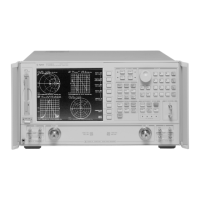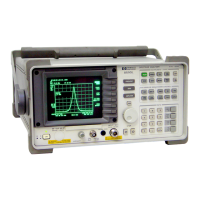6- 5
Calibrating for Increased Measurement Accuracy
Calibration Considerations
• 90 to 100 dB: Isolation calibration is recommended with test port power greater than 0 dBm. For this
isolation calibration, averaging should be turned on with an averaging factor at least four times the
measurement averaging factor. For example, use an averaging factor of 16 for the isolation calibration,
and then reduce the averaging factor to four for the measurement after calibration.
• Greater than 100 dB: Same as 90 to 100 dB, but alternate mode should be used. See "To View a Single
Measurement Channel" on page 5-11.
Saving Calibration Data
You should save the calibration data, either in the internal non-volatile memory or on a disk. If you do not
save it, it will be lost if you select another calibration procedure for the same channel, or if you change
stimulus values. Instrument preset, power on, and instrument state recall will also clear the calibration data.
Restarting a Calibration
If you interrupt a calibration to go to another menu, such as averaging, you can continue the calibration by
pressing the
softkey in the correction menu.
The Calibration Standards
During measurement calibration, the analyzer measures actual, well-defined standards and mathematically
compares the results with ideal "models" of those standards. The differences are separated into error terms
which are later removed during error correction. Most of the differences are due to systematic
errors—repeatable errors introduced by the analyzer, test set, and cables—which are correctable.
The standard devices required for system calibration are available in compatible calibration kits with
different connector types. Each kit contains at least one short circuit, one open circuit, and an
impedance-matched load. In kits that require adapters for interface to the test set ports, the adapters are
phase-matched for calibration prior to measurement of non-insertable and non-reversible devices. Other
standard devices can be used by specifying their characteristics in a user-defined kit, as described in
"Modifying Calibration Kits" on page 7-57.
The accuracy improvement of the correction is limited by the quality of the standard devices, and by the
connection techniques used. For maximum accuracy, ensure that the connectors are clean and use a torque
wrench for final connections.
Electronic calibration (ECal) modules serve as the calibration standards for electronic calibration
procedures. ECal modules are electronic networks that simulate impedance states that are similar to
mechanical standards. The factory error correction for optimum performance is embedded in the module’s
memory.

